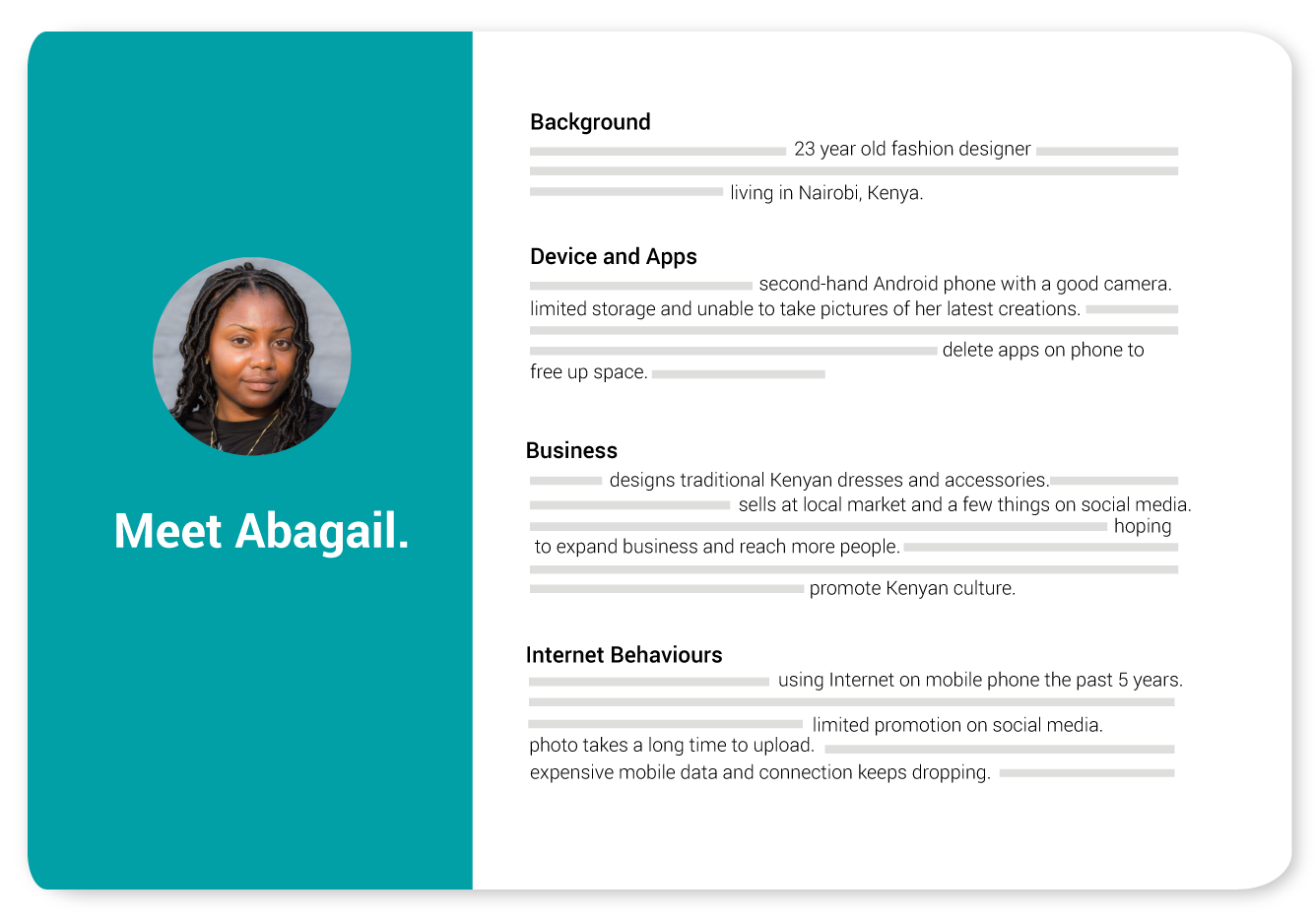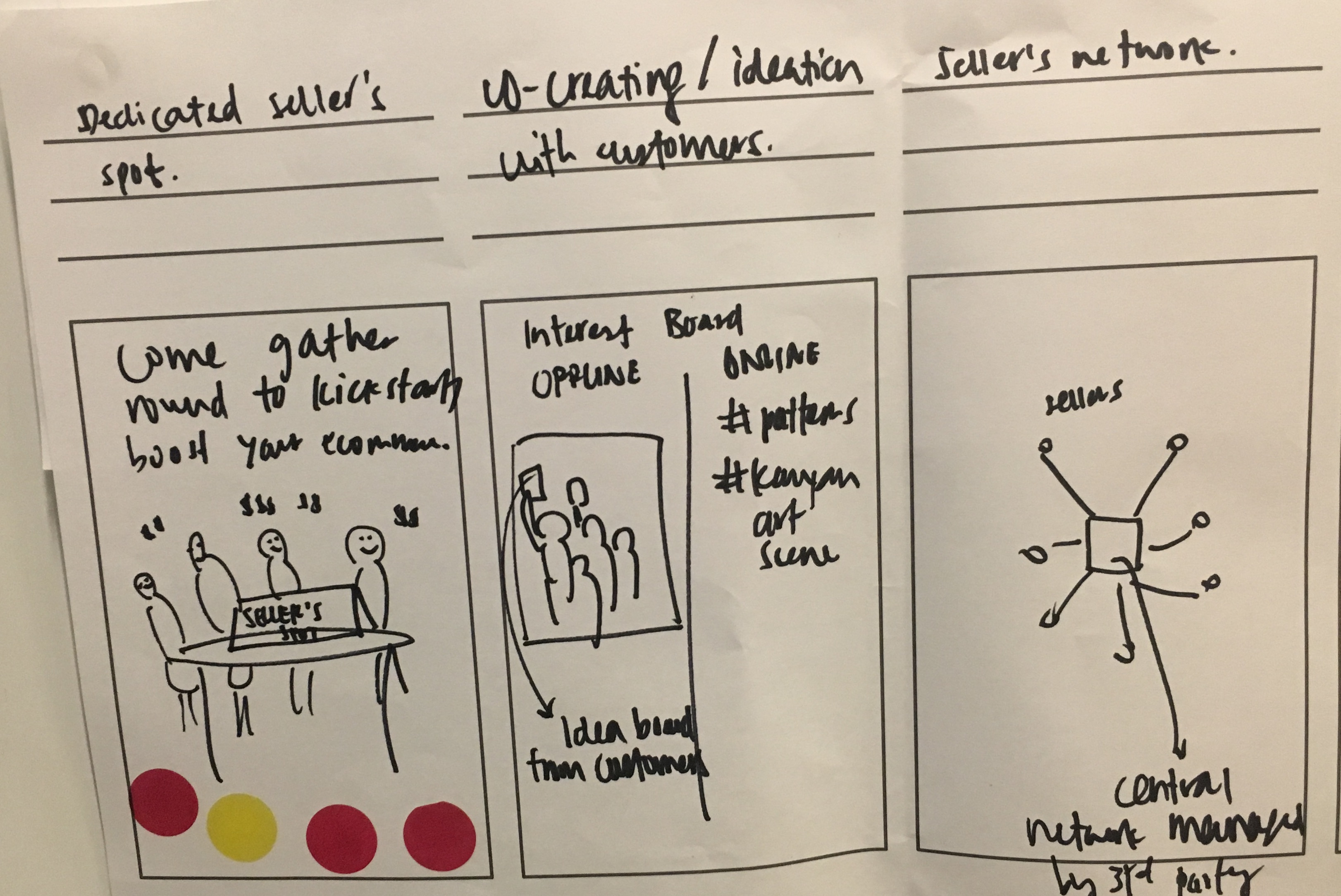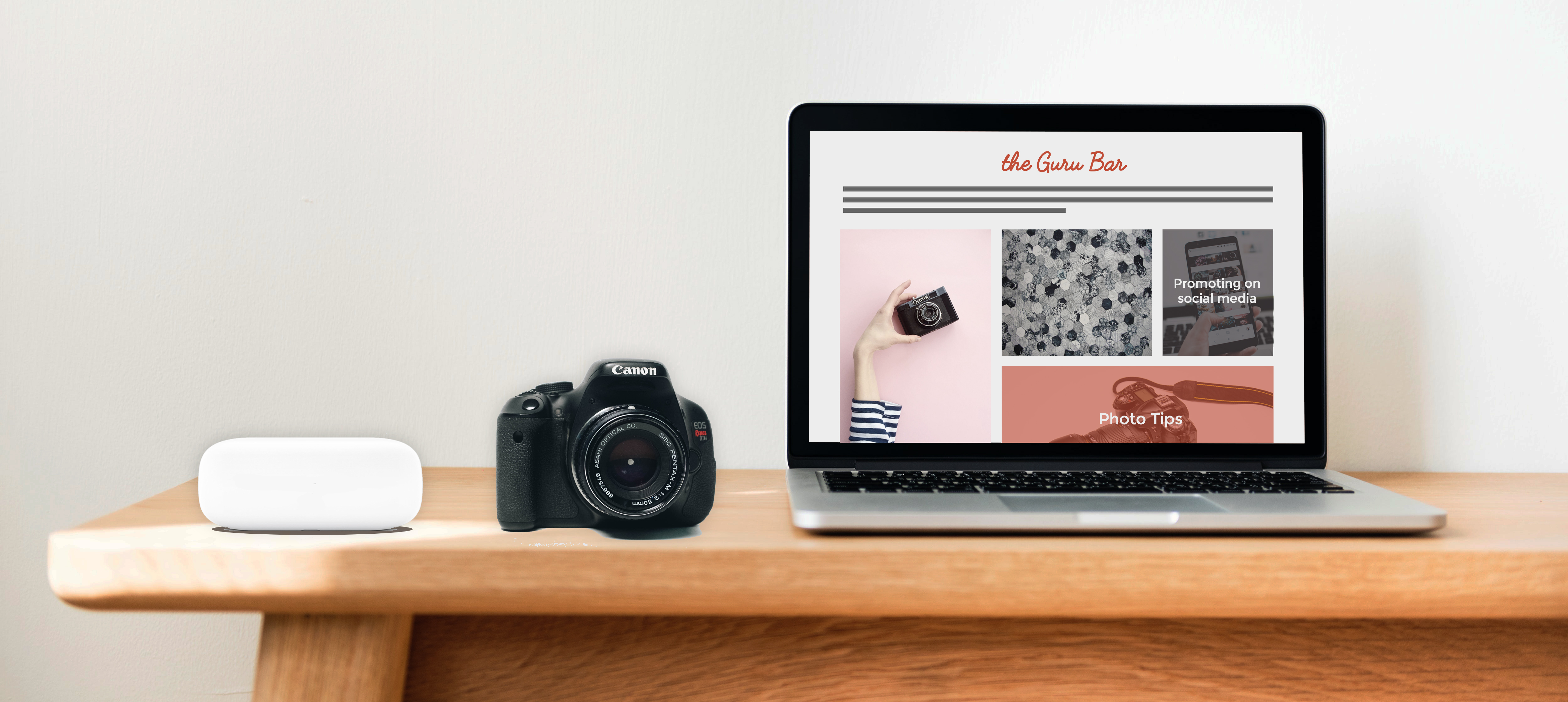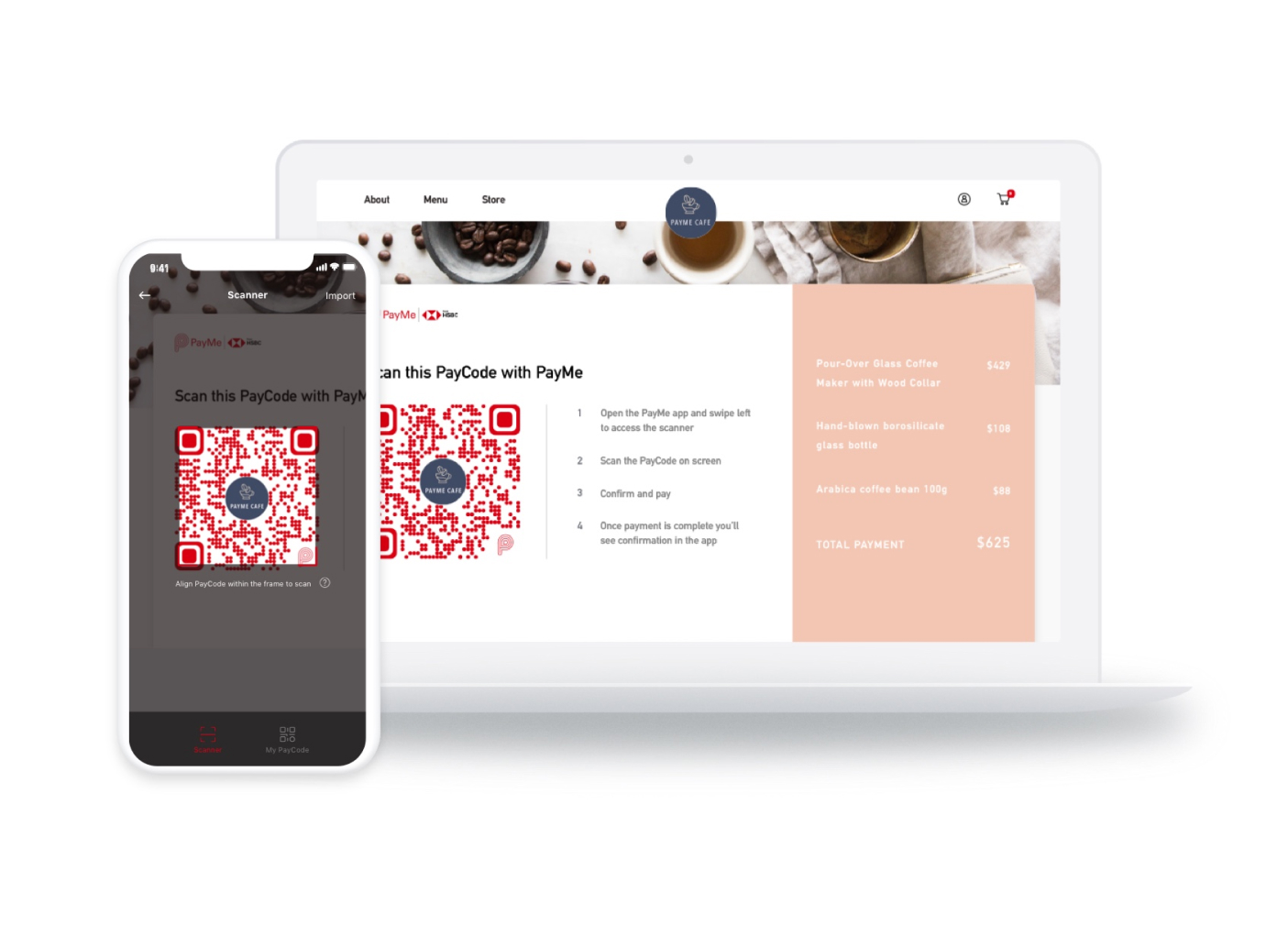Immersive User Research
When conducting user research, the best way to understand user behavior is by immersing yourself in their environments.
Google’s design team embarked on an immersion trip to understand how motorbikers interact with Google Maps, especially those who offer Go-Jek rides, the Indonesian motorcycle ride-hailing service.
To share these insights with team mates who weren't there, they used immersive storytelling to illustrate the motorbikers' interactions and constraints with Google Maps on the road. These stories were a series of 10-second videos and first-person photos.
Getting to Know the Users
Tasked to design a better experience for buyers and sellers, we were given the persona of Abagail, a talented fashion entrepreneur and seller in Nairobi, Africa.
Based on her profile, we extracted keywords that summarized her pain points, challenges and aspirations.





